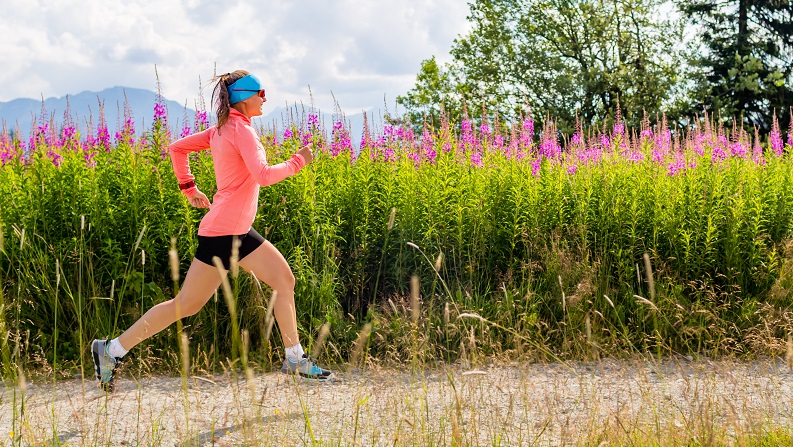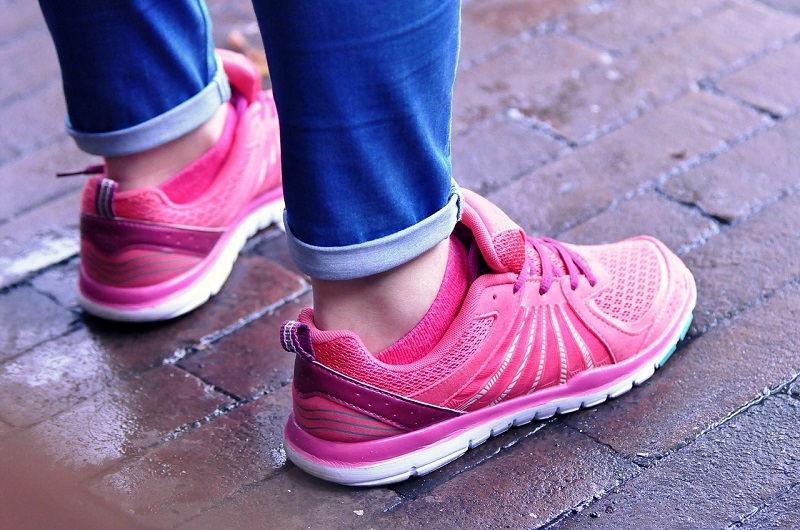
Our Editors independently research, test, and rate what we feel are the best products. We use affiliate links and may receive a small commission on purchases.
Whether you’re an absolute newbie or a seasoned veteran, the route you run on can completely change your gains, your experience, and your body!
Everyone eventually has a favorite running path or two, and if you haven’t yet, we’re here to help you out. The guide below details everything you need to take into consideration to ensure you have the best time and make the most of your efforts.
What are your current circumstances?
Before you do anything, you need to really analyze yourself and your current situation. If you don’t, you’re just not going to get the results that you want and need. Running is a very personal matter, and for you to fully enjoy the sport, you should be in a good state of mind. Start out by asking yourself the following questions:
- What is my current fitness level?
- Where would I like my fitness level to be in 6 months? In 1 year?
- Are there well-maintained trails near to where I live or work?
- Do I have to take potential time constraints into consideration?
- What kind of gear will I require to make my running possible?
While these are all quite simple questions, they’re important to answer honestly before moving on to the next section. For example, don’t write down that you’re at an advanced level of fitness if you’re just starting out as this will only end up in disappointment and possibly injury.
If you don’t have trails by you, then you’ll need to travel a bit to get to them, while taking any potential time constraints into consideration, etc. You get the idea.
As far as running gear goes, nothing can make you into a champion runner, but it’s important to have gear that works well for your body, your gait, the environment, and so on.
Current Fitness Level
Let’s expand a bit on the previous question: “What’s my current fitness level?”. Since we’re talking specifically about running here, we’re going to measure your fitness level by how quickly you can run a mile. If you haven’t clocked one recently, then it’s about time you do so.
Not to worry, though, as most beginners don’t have that information readily available. More experienced runners typically have dedicated devices and apps that will tell them all this information.
Are you feeling lost in the sea of all of the running apps available? You’re not alone! Here are our personal favorites that are useful no matter what experience level you’re at:
- Runkeeper (Android/iOS): This one is a crowd favorite, utilizing your smartphone’s GPS to seamlessly track not only running, but cycling, hiking, and more. You’ll get to see your pace, distance traveled, total workout time, calories burned, among other useful metrics. If you’re having trouble arranging your own training plan, this app comes packed with an array of them to choose from. Choose to run on your own path or follow the most popular running routes in your area.
- Couch to 5K (Android/iOS): If you’re brand-new to running and are having a hard time advancing to the next level. This app will take you from a “couch potato” into someone capable of running a 5k. By using a virtual coach, you’ll feel motivated while the GPS will track your distance. After you’re done with your run, you can input your data into Active.com.
- Strava (Android/iOS): Strava is the best app if you’re advanced at running already, but also works well with cycling. If you’re really competitive, there are many features within the app that cater to this. It tracks your running speed, distance, time, as well as the course taken. After you’re done, you’ll get to see where you stack up on the leaderboards, as well as any achievements and challenges you’ve taken.
If you’re not someone who’s particularly into technology to track your runs, then paper and pencil work just fine, as well! Just as long as you’re consistent and accurate!
Where would you like to be in 6 months/1 year?
Our bodies change rapidly, and in 6 months you can be worlds ahead of where you are now. With that in mind, you should really reach for the stars when it comes to your goals. Don’t be afraid of pushing yourself beyond your boundaries, but also make sure that they’re realistic and can be achieved.
If you’re creating goals that are just too unrealistic for where you are now, you’re going to set yourself up for failure which is one of the most unmotivating things you can do for yourself.
So, if you’re wondering if you’re better off setting a goal a bit too easy for yourself or a bit too difficult, it’s best to go with the former. Achieving a goal (no matter how small) is going to motivate you and propel you to achieve even bigger things while feeling great about yourself!
So, let’s first determine your current fitness level and from there we can start creating goals that you’ll have to work to get, but will be realistic to accomplish.
Routes Near You
Do you live in an area where you have easy access to well-maintained or safe running routes? If you live in a city, you most likely have access to a park close to your house that’s safe to use.
However, if you would like to run in an area that’s not concrete or not in the middle of the city, you may need to do a bit of research to find something more remote. As previously mentioned above, there are apps that you can use to find ready-to-run routes.
If you live in a smaller town or in the countryside, beach, or forest, you may have many more options to select from. Just make sure that you’re always taking proper safety precautions. Also check first to make sure that the path is even enough that you’re not going to sprain your ankle, and that it’s free of any potentially dangerous obstacles/animals.
In addition, always remember to warm up before running, including taking your time to properly stretch. Place special focus on your hamstrings, quads, and calves as these are the muscles that are most likely to get pulled while running. Once you’re done, you’ll also need to cool down, while again stretching.
No matter what kind of weather you’re running in, always protect your skin. This could be through UV-resistant clothing or through the application of (at minimum) SPF 30+ sunscreen to exposed parts of the skin.
What should you do if you become injured?
- Immediately stop running. Trying to “run through the pain” is the worst piece of advice possible, and can lead to a very serious injury if you don’t already have one. If you can, try to take all weight off of the injured area.
- See your doctor as soon as you can. Your physician will be able to correctly diagnose and hopefully treat you. If not, they will lead you to a specialist who can.
- Also treat the injury correctly at home. If you have a soft tissue injury, you can greatly aid in the recovery process with adequate rest time, ice packs, compression, and by elevating the injured area above your heart.
- Never begin running before the injury has properly healed. If your doctor says it’s okay and you feel fine to do it, you can perform a low-impact type of exercise which doesn’t risk interfering with your injury. Swimming is usually the best alternative in these cases.
Time Constraints
While it would be nice if we could run any time we felt like, for as long as we’d like, any day of the week. Unfortunately, for the majority of people, this just isn’t the case. So, think realistically about your schedule and about your personal preferences.
When do you feel the most motivated or have the most energy? Also, when do you have a free chunk of time that you can dedicate to running without worry?
At first, it may be tough to motivate yourself to spend your “fun” time running. If you’re already an advanced runner, then this may not be such a challenge.
Try to begin making a weekly plan, taking into consideration the free time you have. Are you able to wake up a bit earlier and start your day off with a run?
Do you get off work early where you still have adequate sunlight for your run? Perhaps you don’t have time during the week at all. Then, you’ll want to really take advantage of the weekend and really focus on yourself and achieving your goals.
Gear Needed
If you’ve only ran indoors or on tracks before, then you’re going to need to go out and purchase a different set of gear. Running on trails or “off the grid” is going to require much different clothing, and quite possibly different shoes, too.
Consider the area you live in and the various seasons/weather conditions it goes through during the year. If you live in a pretty temperate climate that stays relatively warm and dry all year, then you won’t need to buy much.
However, if you live in a place that gets all 4 seasons, complete with snow, rain, sun, heat, and so on, you’ll need to expand your horizons and select outfits that have you covered with each.
- Warm Weather: For warm weather runs, you want your clothing to be able to easily wick moisture away. If you’re running in a humid climate, then this goes double! Your clothing should simultaneously be able to keep you cool through adequate airflow, while protecting you from the harmful UV rays. Shorts, a t-shirt or tank top, and socks are really the only articles of clothing needed, but you may also like to add on some sunglasses and/or a hat to further protect your face and shield your eyes.
- Cold Weather: You’ll also want your clothing to easily wick moisture away when it’s cold outside. You should be able to get some airflow going, but your clothing should lock out any cold air from coming inside. Shorts and t-shirts should be replaced with pants or tights, along with a vest or soft-shell jacket. Try to avoid heavy coats and overly insulated articles of clothing, as your body is naturally going to get warmer once you start running and you don’t want to overheat! Get yourself a pair of moisture-wicking gloves that keep your digits warm while letting you still navigate your smartphone to listen to your music.
Remember that you don’t have to run every day outside. Chances are that there will be days that are just too hot, too cold, or too wet for you to safely run.
Don’t forget your running shoes! You’ll need a sneaker that comes with a good amount of cushioning, along with motion control – especially when you remember that you’re most likely not going to be running on a completely flat surface.
Summary
Now that you’re practically an expert when it comes to running routes, do you have a solid plan in mind? We know that it can be overwhelming when you’re just starting out, but we promise that if you follow each step of the guide detailed above, that you’ll already be ahead of the pack and starting off on the right foot. One way to finding new places to run is a running club.
Every runner is different, so it’s crucial that you listen to your mind and your body while working to achieve the goals you’ve set out for yourself. We want to thank you for tuning in with us, and we’ll see you again shortly. Happy running!




